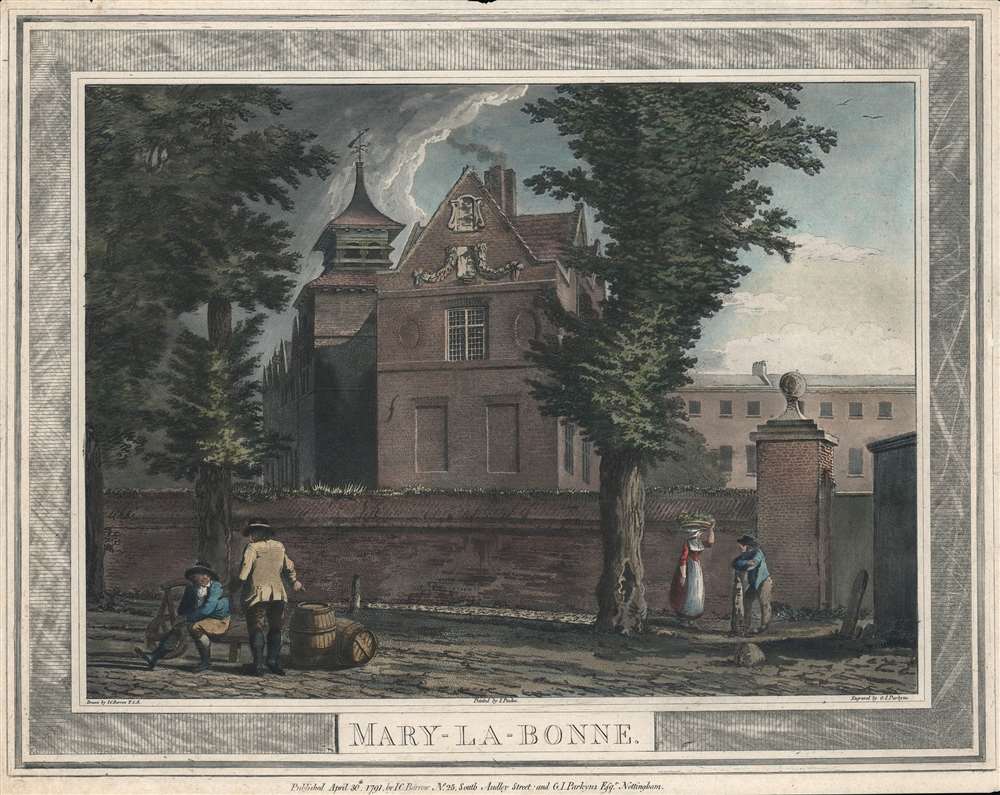1791 Barrow / Parkyns View of Marylebone, London
Marylebone-parkyns-1791$400.00

Title
Mary-la-Bonne.
1791 (dated) 11 x 13.75 in (27.94 x 34.925 cm)
1791 (dated) 11 x 13.75 in (27.94 x 34.925 cm)
Description
This is a 1791 print depicting the Marylebone Manor House in the eponymous Marylebone neighborhood of London. The area underwent rapid development in the 18th century, from a rural and somewhat disreputable parish to a posh neighborhood containing the London homes of country nobility.
In the 1710s the area came into the possession of the Earl of Oxford, who recognized it as an ideal location for the rural nobility to have homes for when they traveled to London. The area quickly gentrified, with the pleasure gardens being converted to a concert venue for the likes of Handel. The Marylebone Cricket Club, for many years the governing body of world cricket, forming up in 1787.
A Closer Look
This view depicts a street scene on the western side of the Marylebone Manor House, a large and recognizable structure that ironically was demolished the same year this view was published. In the early 18th century, the area was still rural and known for lowbrow entertainment, including in the 'pleasure gardens' surrounding the manor, cockfights, bull-baiting, and boxing. It attracted highwaymen and hosted a dueling grounds.In the 1710s the area came into the possession of the Earl of Oxford, who recognized it as an ideal location for the rural nobility to have homes for when they traveled to London. The area quickly gentrified, with the pleasure gardens being converted to a concert venue for the likes of Handel. The Marylebone Cricket Club, for many years the governing body of world cricket, forming up in 1787.
Publication History and Census
This view was drawn and published by I. C. Barrow, engraved by George Isham Parkyns, and printed by I. (or J.) Pushee in 1791. It was one of a series of twelve prints in Barrow's uncompleted 'Picturesque view of churches' series. The present edition is only known to be held by the British Museum, while the same museum and Yale University hold a seemingly identical print dated 1795. Rare to the market.Cartographer
George Isham Parkyns (c. 1749 - 1820) was a British landscape artist from Nottingham. Born into a family of lesser nobility (baronets), he produced many paintings of the English countryside. In the mid-1790s, he traveled throughout the United States, drawing picturesque landscape paintings of famous sites like Mount Vernon. He attained a letter of introduction from Thomas Jefferson for his travels in Virginia, but it appears that the two men never met. More by this mapmaker...
Condition
Very good. Small areas of loss along top edge and at bottom-right edge.
References
OCLC 1102392071 (1795 edition).

